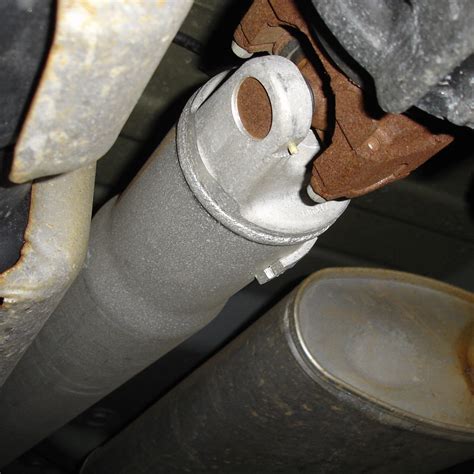Driveshaft Repair: Repair vs. Replacement Costs
A driveshaft, also known as a propeller shaft, is a crucial component of your vehicle's drivetrain, transferring power from the transmission to the differential. When it fails, you're left stranded and facing a potentially expensive repair. Understanding the costs associated with driveshaft repair versus replacement is key to making an informed decision and avoiding unnecessary expenses. This article will delve into the factors influencing the cost, helping you navigate this common automotive dilemma.
What Causes Driveshaft Problems?
Before we dive into repair versus replacement costs, let's look at the common culprits behind driveshaft failure. Understanding the cause can help determine the best course of action and potentially save you money.
-
Universal Joint (U-Joint) Wear: U-joints are critical components connecting the driveshaft sections, allowing for changes in angle. Wear and tear, often due to age and mileage, leads to clunking noises, vibrations, and eventually failure.
-
Center Support Bearing Failure: This bearing supports the driveshaft's weight and prevents vibrations. A worn-out bearing causes excessive vibrations and can lead to further driveshaft damage.
-
Driveshaft Damage from Impact: Driving over potholes, hitting curbs, or experiencing a collision can severely damage the driveshaft, causing bends, cracks, or even complete breakage.
-
CV Joint Issues (on front-wheel-drive vehicles): Constant Velocity (CV) joints allow for smooth power transfer even when the wheels turn. Worn CV joints create clicking noises and eventually lead to driveshaft malfunction.
-
Improper Installation/Maintenance: Incorrect installation or lack of regular maintenance (such as lubrication) can accelerate wear and tear, leading to premature failure.
Driveshaft Repair: Costs and Considerations
The cost of repairing a driveshaft varies significantly depending on the specific problem and the extent of the damage. Minor repairs, such as replacing a single U-joint or the center support bearing, are generally less expensive than more extensive repairs.
-
U-Joint Replacement: This is often the most common and least expensive repair. The cost typically includes parts and labor and ranges from $100 to $300, depending on the vehicle make and model.
-
Center Support Bearing Replacement: Replacing the center support bearing usually involves more labor, making it slightly more expensive than a U-joint replacement. Expect to pay between $200 and $400.
-
CV Joint Replacement (FWD): CV joint repair is a more involved process, particularly for vehicles with integrated axles. Costs can range from $300 to $600 or more, depending on the complexity of the repair.
Driveshaft Replacement: Costs and Considerations
If the damage to the driveshaft is extensive—for example, due to a significant impact—repair may not be feasible or cost-effective. In such cases, a replacement is necessary.
The cost of a driveshaft replacement varies considerably depending on:
-
Vehicle Make and Model: The cost of a new driveshaft can range from several hundred dollars to over a thousand dollars, depending on the vehicle.
-
Driveshaft Type: Different driveshafts (e.g., single-piece vs. two-piece) require different replacement costs.
-
Labor Costs: Labor costs are a significant factor, often accounting for a substantial portion of the total cost. Expect to pay several hundred dollars for labor, depending on your location and mechanic.
Repair vs. Replacement: When to Choose Which?
The decision of whether to repair or replace a driveshaft hinges on several factors:
-
Extent of Damage: Minor damage, such as a single worn U-joint, can often be economically repaired. Extensive damage, like severe bending or cracking, generally necessitates replacement.
-
Age and Condition of the Driveshaft: If the driveshaft is old and shows significant wear beyond the immediate problem, replacement might be a more prudent long-term solution.
-
Cost Comparison: Get multiple quotes from reputable mechanics for both repair and replacement. Compare the cost of repairs to the cost of replacement, factoring in the potential for further problems down the road if you opt for a repair.
Frequently Asked Questions (FAQs)
How long does a driveshaft typically last?
The lifespan of a driveshaft varies greatly depending on driving habits, vehicle maintenance, and road conditions. With proper maintenance, a driveshaft can last 100,000 miles or more, but premature failure can occur due to negligence or unforeseen damage.
What are the signs of a bad driveshaft?
Signs of a failing driveshaft include vibrations, clunking noises, especially when accelerating or decelerating, a noticeable shaking in the vehicle, and sometimes even a loss of power.
Can I drive with a bad driveshaft?
Driving with a bad driveshaft is generally not recommended. Continued driving can cause further damage to other drivetrain components, leading to more expensive repairs and potentially dangerous driving conditions.
How can I prevent driveshaft problems?
Regular maintenance, including periodic inspection of U-joints and the center support bearing, lubrication as needed, and avoiding harsh driving conditions, can significantly extend the lifespan of your driveshaft.
By carefully considering the factors outlined above and obtaining professional assessments, you can make an informed decision on whether to repair or replace your driveshaft, ensuring you receive the most cost-effective and reliable solution. Remember, consulting a qualified mechanic is crucial for accurate diagnosis and repair or replacement.

